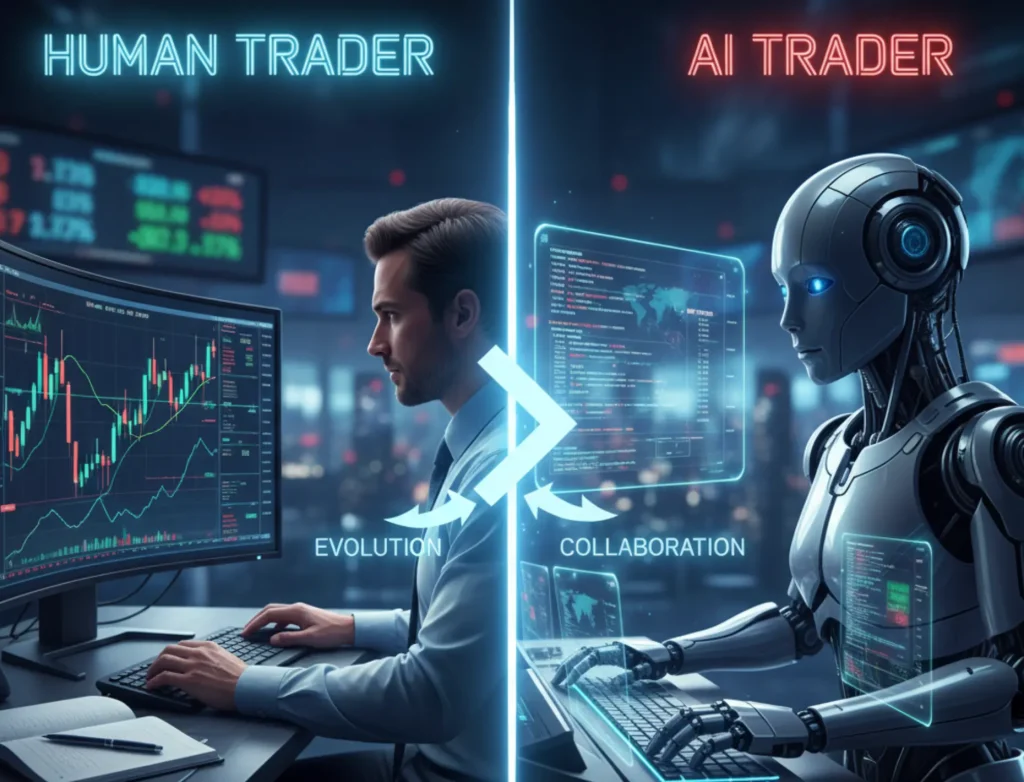Can algorithms alone beat the market? For a time, the answer seemed to be yes. But as competition increased and artificial intelligence became widespread, one truth has become clear: while quantitative (quant) systems remain powerful, it’s the layer of human judgment on top of them that truly sustains an edge.
In this article, I’ll share my journey from pure quant investing to a hybrid “quant + judgment” model, explain why fundamentals and context matter just as much as automation, and show how this combination has helped me navigate today’s highly efficient markets.
From “Pure Quant” to Hybrid Investing
Back in 2008, during the Global Financial Crisis, I coded my first trading bot. At the time, markets were less efficient, and pure technical analysis (TA)—systems based on price patterns and indicators—provided significant opportunities.
For years, I relied on automated strategies that identified chart patterns, executed trades instantly, and removed much of the emotional decision-making that hurts many investors.
But by the mid-2010s, things started to change:
- Spreads compressed: The profit margin between buy and sell narrowed, leaving less room for traders.
- Signals became crowded: Once-novel TA indicators were being used by everyone.
- Returns declined: Backtests looked great on paper but failed in live markets.
By 2016, I realized that 100% rule-based systems no longer delivered consistent results. The edge had eroded.
The Rise of Quantamental Investing
To regain performance, I shifted to quantamental strategies—a blend of quantitative analysis (data-driven models) and fundamental analysis (business and financial insights).
Instead of ranking thousands of stocks only by price action, my models began integrating:
- Earnings growth rates.
- Balance sheet strength.
- Industry growth potential.
- Competitive positioning.
This fusion produced much stronger results. One model I co-designed in 2018, combining momentum with fundamentals, has outperformed the S&P 500 by around 11% annually (net of costs) for seven straight years.
Execution, rebalancing, and position sizing are still fully automated—but the watchlist itself benefits from fundamental checks.
Why Human Judgment Still Matters
Even the most sophisticated algorithm can only process the data it’s given. What it cannot always see are the intangibles that move markets:
- Regulatory risks — e.g., an antitrust investigation targeting a fast-growing company.
- Leadership changes — when a visionary founder quietly steps aside.
- Technological disruption — a rival innovation that threatens an incumbent’s dominance.
- Narratives and sentiment — the “story” investors believe, which often moves faster than earnings reports.
This is where human insight complements machine precision.
After my model generates a ranked list of 200–300 potential stocks, I apply qualitative filters. For example:
- Eliminating hidden risks: reviewing litigation exposure, macro sensitivity, or industry-specific threats.
- Adding under-the-radar opportunities: companies with catalysts not yet visible in financial data, like new product launches or expiring competitor patents.
This discretionary check narrows the list to about 130 high-potential candidates—a mix of proven performers and future disruptors.
How the Portfolio Is Built
Once the candidates are defined, the system takes over again:
- Selection engine: A second quant module ranks stocks by momentum, volatility, and other technical factors, producing the top 35 picks.
- Weighting: Positions start equally, but allocations can drift ±20% to avoid overconcentration.
- Rebalancing: Automatic monthly rotation, with earlier exits if risk triggers fire.
- Risk overlay: Index put options provide downside protection, while a volatility-based algorithm adjusts overall exposure.
This hybrid approach ensures that every step after my qualitative input remains mechanical—keeping execution disciplined and free from emotional bias.
Why This Matters in the AI Era
Today, raw data-crunching has become a commodity. Cloud computing, machine learning, and large language models (LLMs) give even small firms access to tools that once required billion-dollar budgets.
The scarce advantage now lies in contextual judgment—things machines can’t fully capture:
- How a failed FDA trial impacts an entire biotech supply chain.
- Whether a company culture can survive without its founder.
- Which narratives are about to gain momentum in the media and on Wall Street.
By combining machine precision with human nuance, investors can achieve a sustainable edge in an increasingly competitive environment.

Key Takeaways
- Pure quant was powerful, but less effective today. Market efficiency and AI-driven competition have eroded old technical strategies.
- Quantamental is the future. Combining fundamentals with quant tools captures the best of both worlds.
- Human judgment keeps the edge alive. Machines analyze, but humans interpret context.
- Risk management is non-negotiable. Automated hedging and volatility targeting ensure portfolio resilience.
- Small investors still have agility. Unlike massive funds, they can rotate quickly into high-potential opportunities.
Related Reading
If you found this interesting, you might also like:
- How I Built My Growth and Momentum Hedge Strategy – A deep dive into my portfolio rules.
- Why I No Longer Rely on Macroeconomic Analysis for Market Timing – Protecting your portfolio without predictions.
Final Thoughts
Quantitative systems remain phenomenal tools for investors, but they are not enough on their own. True long-term success comes from layering human judgment on top of automation.
As AI levels the playing field, the investors who thrive will be those who know how to combine the strengths of both worlds.
So I’ll leave you with this question: are you running a pure quant, a fully discretionary, or a hybrid strategy—and how do you protect your edge?
Disclaimer: This article is for informational and educational purposes only. It does not constitute financial, investment, or legal advice, and should not be taken as a recommendation to buy, sell, or hold any asset. Always conduct your own research and consult with a qualified professional before making any financial decisions. The author and publisher are not responsible for any actions taken based on the information provided in this content.
